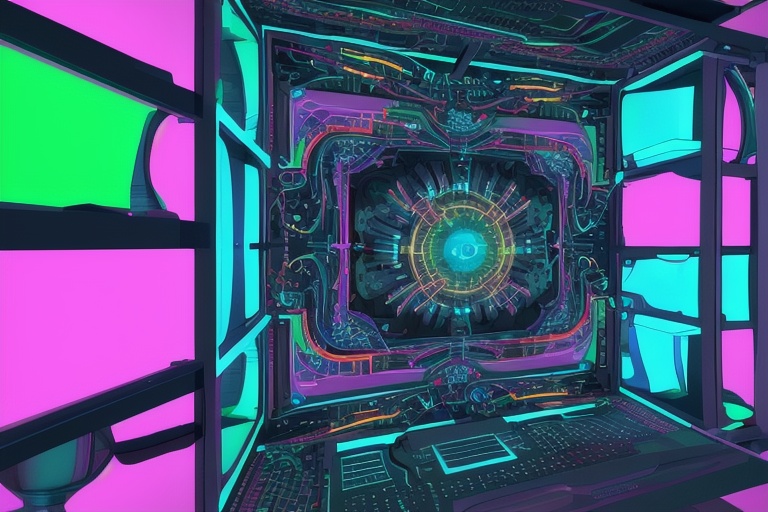The realm of artificial intelligence (AI) has evolved from its nascent beginnings into a force that drives innovation across various sectors. At its core, AI is a set of technologies enabling machines to execute tasks that generally require human-like cognitive functions, such as recognizing speech, making decisions, understanding languages, and identifying images. This technology has advanced to such a degree that it now permeates everyday life, impacting the way we live, work, and play. To comprehensively understand AI's multifaceted nature, one must grasp its classifications: Narrow AI, General AI, and Super AI—each defined by its own set of capabilities and limitations.
The realm of artificial intelligence (AI) has evolved from its nascent beginnings into a force that drives innovation across various sectors. At its core, AI is a set of technologies enabling machines to execute tasks that generally require human-like cognitive functions, such as recognizing speech, making decisions, understanding languages, and identifying images. This technology has advanced to such a degree that it now permeates everyday life, impacting the way we live, work, and play. To comprehensively understand AI's multifaceted nature, one must grasp its classifications: Narrow AI, General AI, and Super AI—each defined by its own set of capabilities and limitations.
Narrow AI: Specialized Intelligence at Work
Narrow AI, often referred to as weak AI, epitomizes the current state of artificial intelligence technology. It is designed with a laser focus—tailored to excel in executing specific tasks or operating within a limited domain. This form of AI has become ubiquitous, bolstering technologies like voice assistants, image recognition tools, and personalized recommendation engines.
Machine learning, a critical subset of AI, propels Narrow AI's capabilities. It entails training algorithms on vast datasets to detect patterns, extract insights, and anticipate outcomes. Narrow AI systems may outpace humans in task-specific efficiency and accuracy, yet they falter when tasked with tasks beyond their narrow scope. For instance, a facial recognition system may rapidly and accurately identify individuals amidst a sea of faces, yet it cannot comprehend the nuanced emotions or complex contexts behind their expressions.
General AI: The Aspiration for Versatile Thinking Machines
Ascending the AI hierarchy, we encounter General AI or strong AI, a conceptual framework of machines with intellectual versatility matching humans. The ambition is to engender artificial entities that can reason, infer, learn autonomously, and exhibit a broad understanding—akin to the human brain's functioning. A General AI system wouldn't be tethered to predefined tasks; it could adapt, formulating solutions to problems it encounters anew.
The implications of achieving General AI are profound; it would redefine industries, from healthcare delivering personalized medicine to educational platforms that adapt to individual learning styles. Yet the pursuit of General AI is not without its controversies and conundrums, stirring up ethical debates around automation's impact on employment, machines potentially outstripping human cognition, and moral decision-making in silicon-based entities.
Super AI: The Apex of Artificial Intellect
The zenith of AI's potential is encapsulated in the notion of Super AI—a theoretical construct that posits an AI that could eclipse human intelligence across every conceivable domain. Such an AI would not only master complex problems that currently stump our finest minds but would also do so at a pace and efficiency far outstripping our capabilities. Its existence would signify a paradigm shift with the power to tackle the most elusive global challenges, from environmental degradation to eradicating diseases.
Yet, the specter of Super AI remains firmly within the realms of speculative fiction. There is no clear path to its realization, and with it comes a Pandora's box of ethical issues. Full-fledged Super AI prompts us to ponder our place as humans, the future of our autonomy, and the preservation of values when machines are the superior intellects.
Ethical Dimensions and the Responsible Use of AI
The ascent of General AI and the hypothetical future Super AI pose profound challenges. Designing safeguards to maintain control over these intelligent systems becomes paramount. The prospect of machines operating with superior intellects also raises concerns about unforeseen behaviors, including vulnerability to cyber threats and system malfunctions.
Moreover, AI systems mirror the data they are trained on. Should this data bear the imprint of societal biases, the resulting AI would reproduce these prejudices, potentially institutionalizing discrimination. And the specter of job disruption looms large—how society redistributes labor and finds new employment paradigms in the wake of General or Super AI is a question of critical import.
Navigating the nuanced landscape of AI requires a disciplined understanding of its capabilities and potential impacts. As we delve further into Narrow AI's practical applications and wrestle with the theoretical and ethical dilemmas posed by General and Super AI, we walk a tightrope of technological innovation. Clear, concise, and ethical development and deployment of AI is key to harnessing its power while safeguarding our societal fabric.
The discourse surrounding AI's ascent is multilayered and rapidly evolving. In the forthcoming Part 2 of this series, we will deepen the exploration of AI's implications and promise across different fields, shining a light on how artificial intelligence continues to shape our world and what lies ahead in this technological odyssey.
Information for this article was gathered from the following source.




